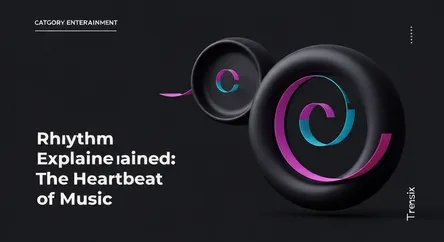Entertainment
Rhythm Explained: The Heartbeat of Music

Discover the core of music. Learn what rhythm is, why this fundamental element is always trending, and how it makes us feel and move.
What is it?
Rhythm is the fundamental component of music that deals with the timing of sounds and silences. It's the pattern or the placement of notes in time, creating the pulse that drives a piece of music forward. Key elements of rhythm include the beat (the basic unit of time), tempo (the speed of the beat), and meter (the organization of beats into regular groups, like 4/4 time). From the simplest drum pattern to a complex symphony, rhythm provides the structural framework upon which melodies and harmonies are built. It is, in essence, the ordered movement of music through time.
Why is it trending?
While a timeless concept, rhythm consistently trends because it's the most accessible and visceral part of modern music. In the age of social media, rhythmic hooks are what make songs go viral on platforms like TikTok, powering dance challenges and short-form video content. Genres like hip-hop, EDM, and Afrobeats, which dominate global charts, are heavily rhythm-centric. Producers and artists are constantly innovating with complex polyrhythms and unique beat patterns to stand out, making the exploration of rhythm a perpetual trend in music creation and consumption.
How does it affect people?
The effect of rhythm on humans is profound and instinctual. It directly engages the motor centers of the brain, creating the irresistible urge to tap a foot, nod a head, or dance. This physical response is known as entrainment. Rhythm also heavily influences emotion; a fast, driving beat can evoke excitement and energy, while a slow, steady rhythm can induce calmness or sadness. It unifies listeners in a shared experience, whether on a dance floor or at a concert, making it a powerful tool for connection and emotional expression.